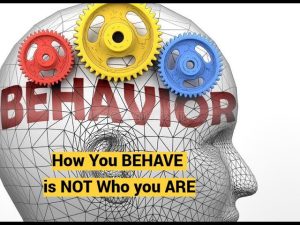Summary on Empathy and Inter-Subjectivity
Definitions and Nature of Empathy
- Empathy is argued to be a specific case of inter-subjectivity, not merely about emotion but about existence and being. It involves internal reactions triggered by the presence of another person, including emotions, cognitions, and sensations, but these reactions are entirely internal and do not involve any literal transfer of feelings or sensations from one person to another. [00:00]
- The notion that empathy requires communication of emotion is contested; empathy can occur without any communicated emotion, even towards non-emotional states. [00:20]
- Empathy is likened to resonance or a flashback, an internal cascade of emotions triggered by an external stimulus, not a transfer of feelings or sensations. [03:10]
- Since no known method exists to verify if two people experience the same subjective feelings, empathy relies on an inter-subjective agreement based on language, which is inherently limited and probabilistic. [06:30]
Subjectivity, Language, and Limits of Understanding
- The subjectivity of experiences like color perception exemplifies the difficulty in verifying shared experiences; this problem is even more complex for emotions and sensations, which are not objectively measurable. [07:20]
- Language and art serve as bridges to approximate shared understanding of subjective experiences, but such approximations are inherently imperfect and based on mutual agreements rather than verified truth. [09:40]
- Words denoting emotions do not guarantee identical connotations or subjective experiences between individuals, leading to potential misunderstandings in communication, such as in couples discussing “love.” [08:00, 10:20]
Psychological and Social Constructs of Empathy
- Empathy is described as a result of socialization and conditioning, where individuals learn to project their own emotional experiences onto others and feel responsibility for others’ emotional states through mechanisms such as guilt. [17:45]
- Emotional contagion and mirroring behaviors (body language, repeated words) are automatic social reactions that contribute to the experience and expression of empathy. [18:30]
- The “projection” mechanism explains how people attribute their own experienced emotions to others, often unconsciously mislocating the source of emotions. [20:10]
- Empathy is closely linked to the development of self-awareness and cognitive maturation during childhood, enabling the ability to appreciate others’ perspectives and emotions gradually. [22:00]
Empathy as a Psychological Phenomenon and Its Relation to Psychosis
- Empathy is argued to be a form of psychosis, characterized by the confusion of internal experiences with external sources; people mistake internally generated emotions as originating externally. [24:20]
- Newborn reflexive empathy demonstrates that early empathy is a social reflex without full recognition of self and other as separate entities. [23:30]
- The internal nature of empathy is reinforced by research indicating that empathy is more influenced by the empathizer’s internal states (health, mood, etc.) than by the feelings of the external other. [26:00]
- Positive emotions and good moods increase empathy and altruism, indicating that empathy relies heavily on the emotional state of the person empathizing. [27:40]
Challenges in Measuring and Validating Empathy
- There is no definitive test or measurement to objectively confirm equivalence in emotional experience or empathy between people. [05:50]
- Current neuroscientific tools (e.g., fMRI) cannot conclusively prove the authenticity or exact content of others’ emotional states. [06:40]
- Empathy is ultimately dependent on introspection and mutual linguistic agreements which lack objective validation or falsifiability. [11:30]
Empathy’s Role in Social Interaction and Moral Development
- Empathy plays a significant role in moral development and social interaction by enabling individuals to appreciate and respond to others’ feelings and perspectives. [21:00]
- Social and cultural conditioning, including feelings of guilt and responsibility towards others’ well-being, are central to developing empathy. [19:00]
- Empathy contributes to the social glue that facilitates cooperation and understanding despite its inherent subjectivity and limitations. [10:00]
Note: The timestamps refer approximately to points in the transcript where major ideas were discussed, segmented in minutes and seconds [mm:ss].






